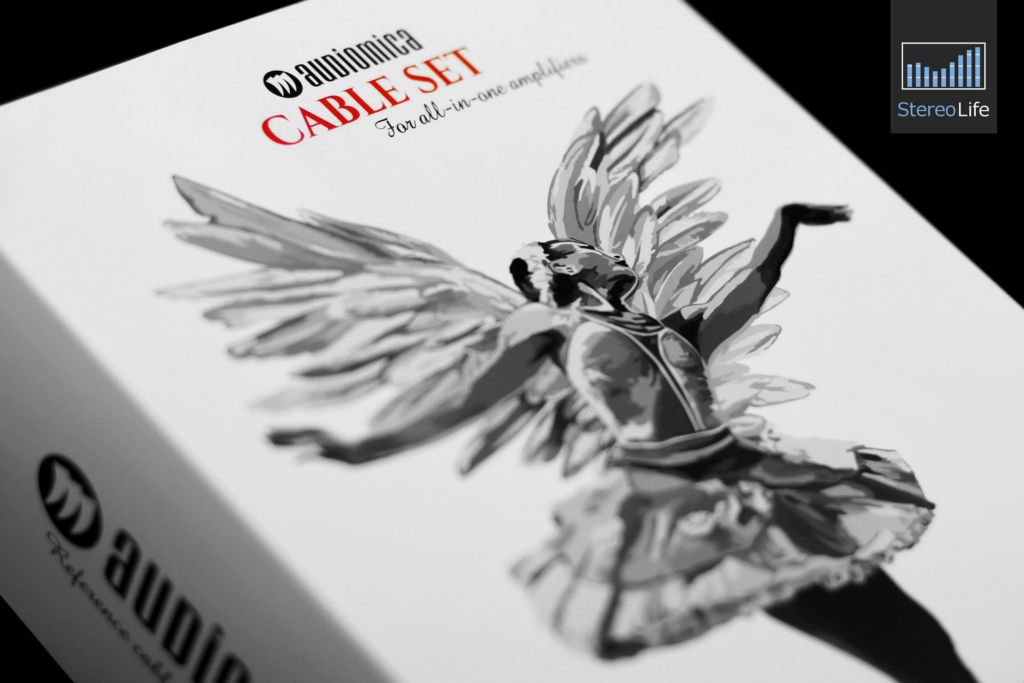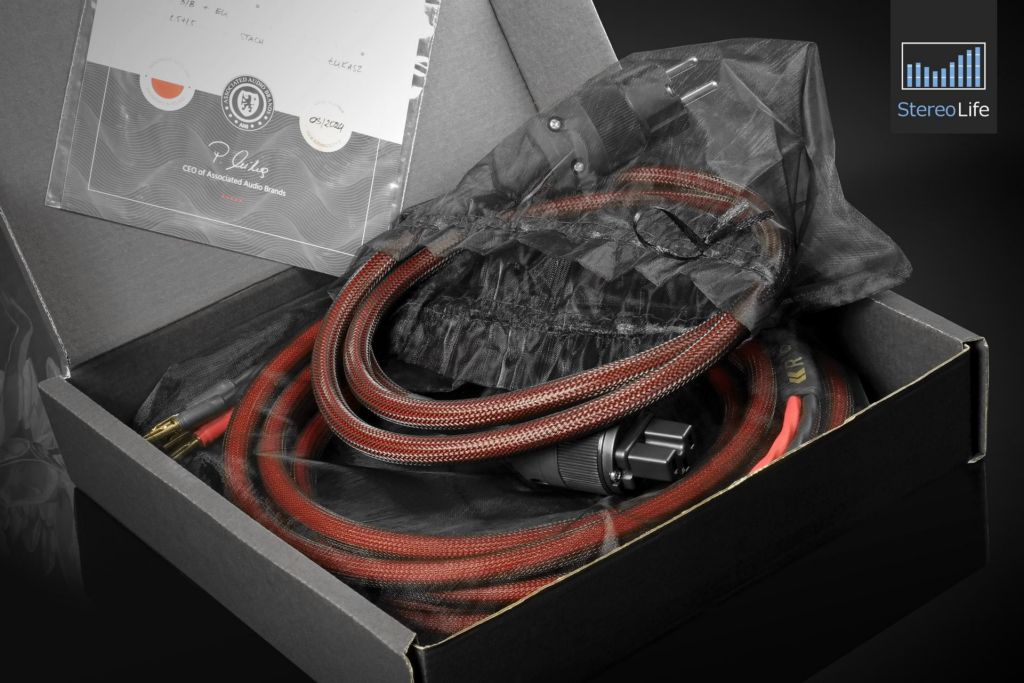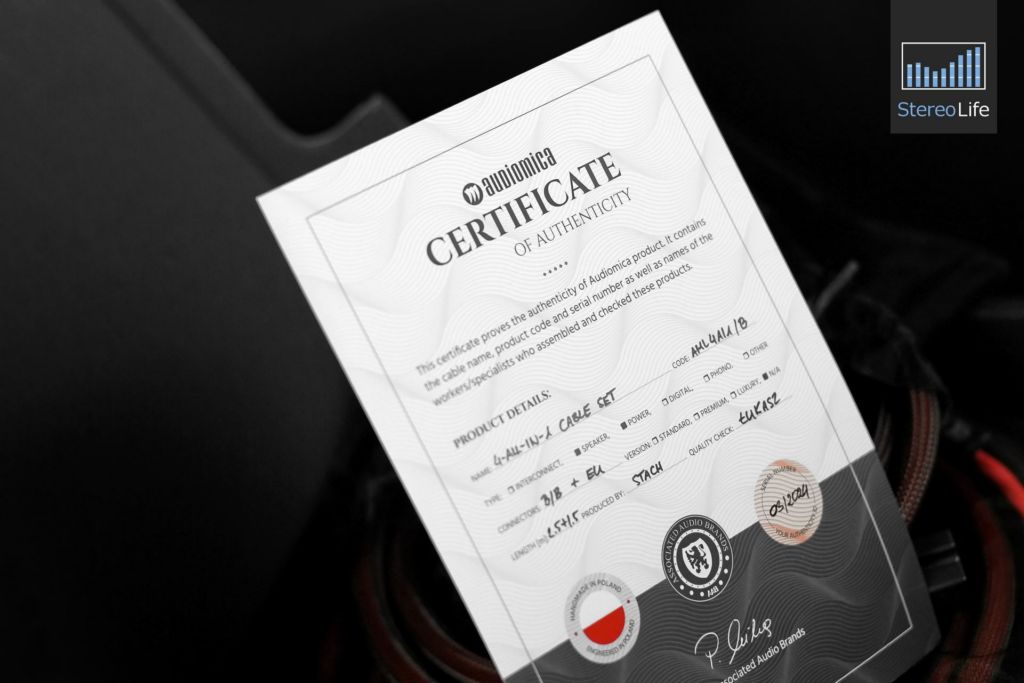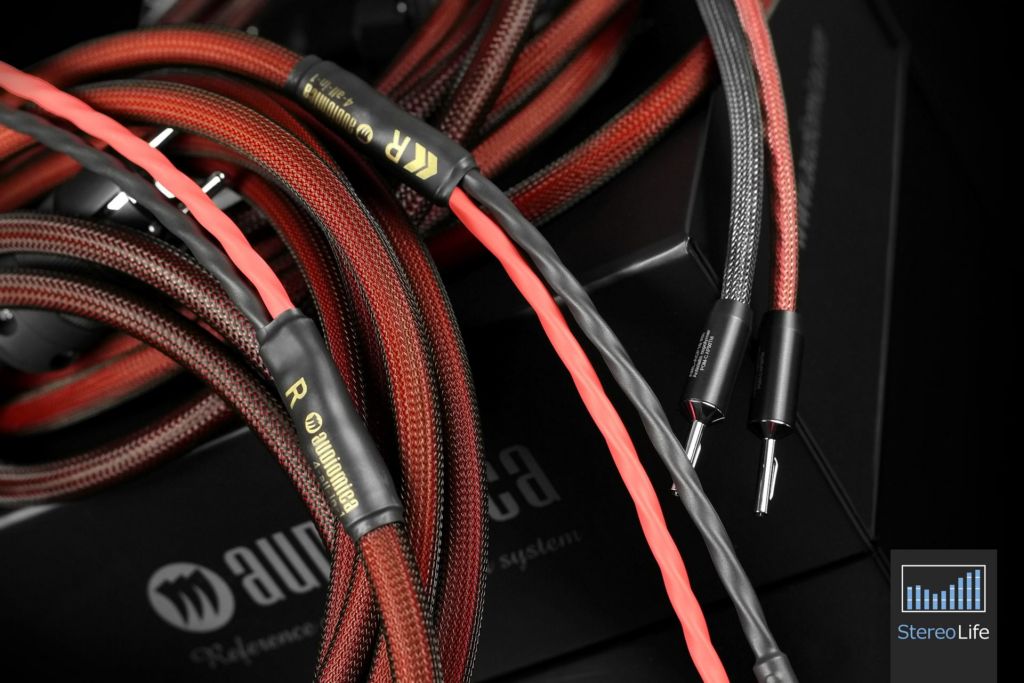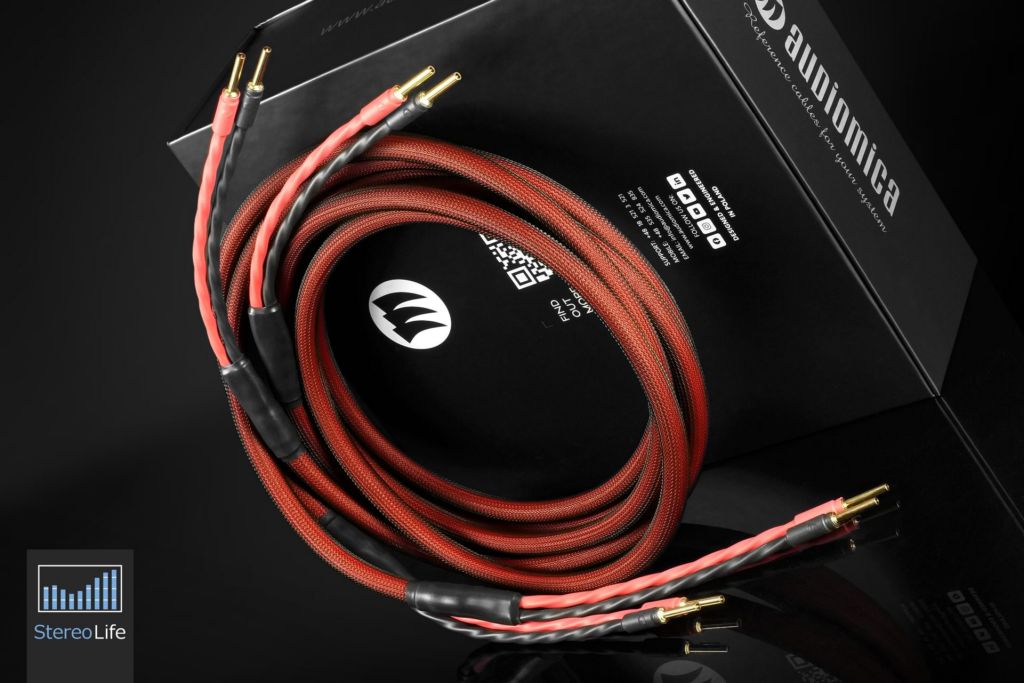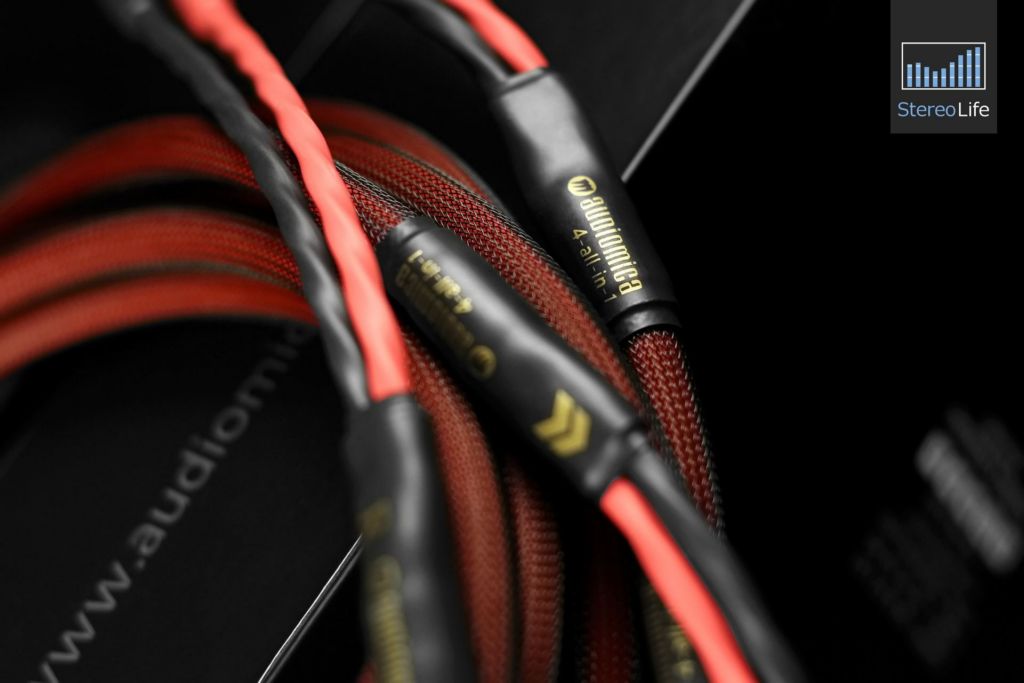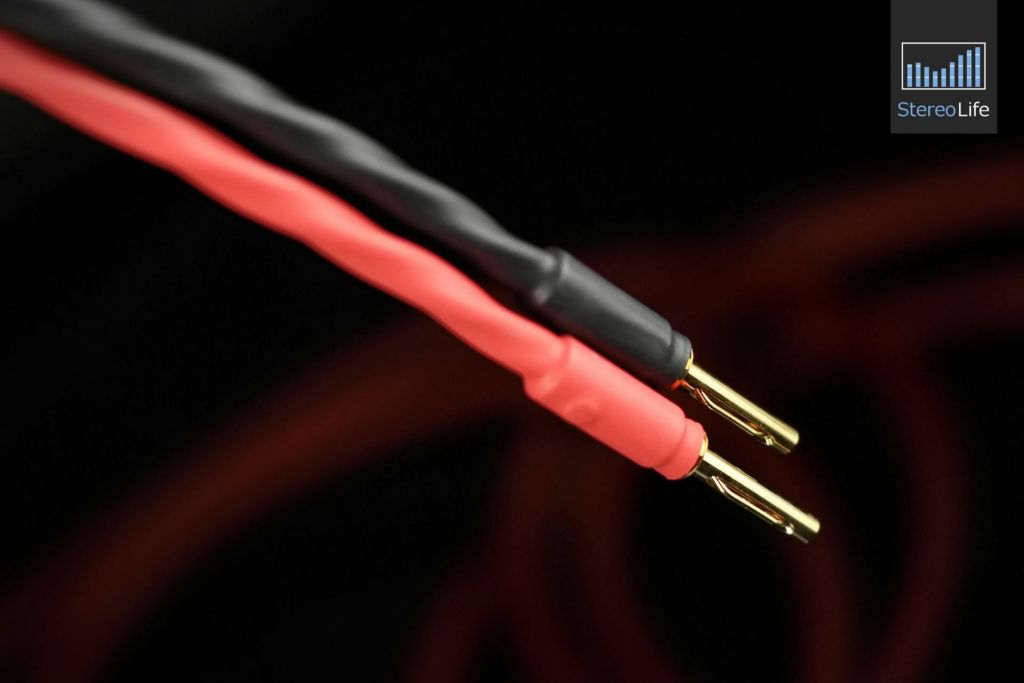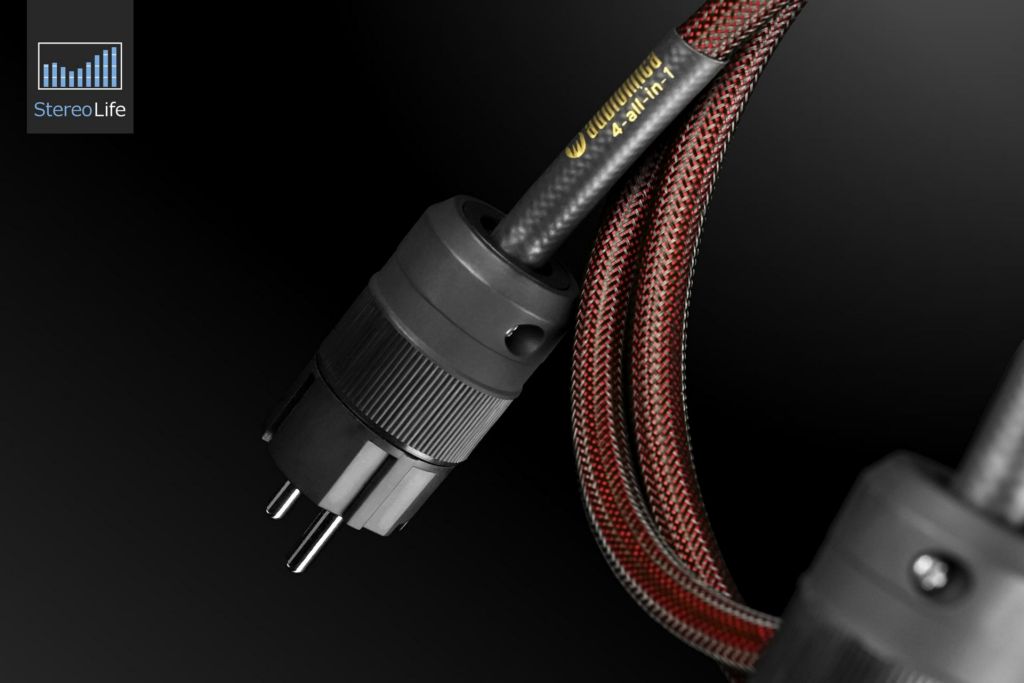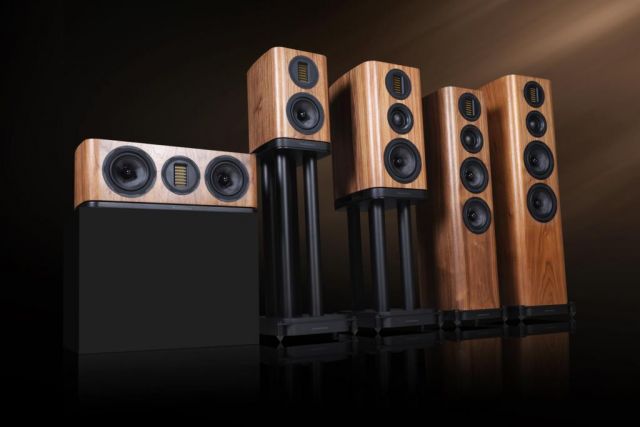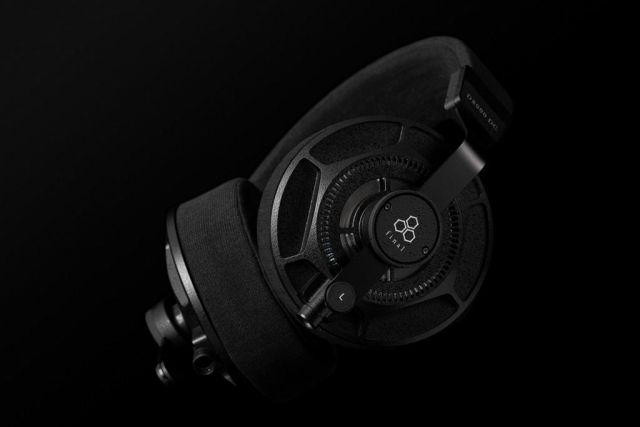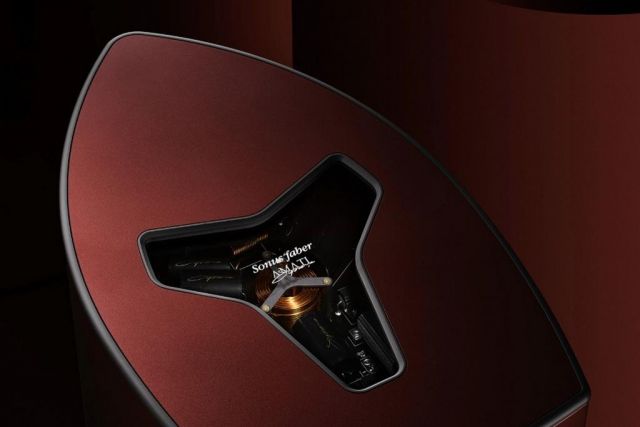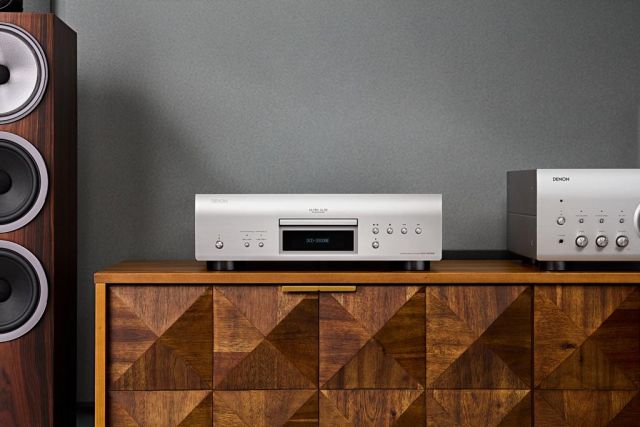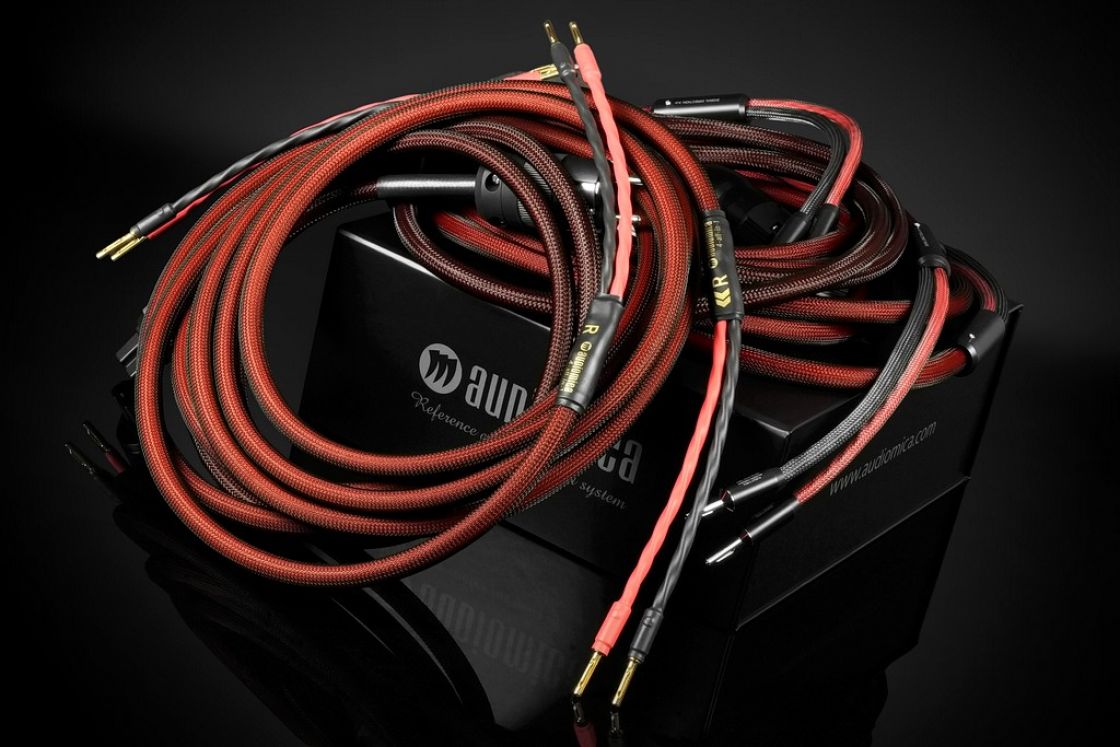
- Reviews
- Posted
Audiomica Laboratory 4-all-in-1 & 4-all-in-1 PRO
The official history of Audiomica Laboratory brand began in 2005, but its founder, Łukasz Mika, had planned this step several years earlier. As someone who always loved music and was fascinated by the equipment used to reproduce it, he eventually decided to explore the topic of cabling and its impact on the sound of his stereo system. What initially seemed like a harmless curiosity completely captivated him. The differences were clear, and observing them brought Łukasz immense joy. However, what intrigued him even more was the question of why this happened - what factors and design aspects made one cable produce phenomenal sound while another lacked that magic?
Finding answers in manufacturer-provided materials proved impossible. Some companies disclosed no specific information, while others offered vague descriptions, focusing on certain technical details such as copper purity or braid geometry while remaining silent on other aspects. Every audiophile knows that marketing jargon dominates this field. Only a few companies dare to explicitly state that their cables sound a certain way because they incorporate specific design solutions. It's reminiscent of ancient interpretations of astronomical phenomena such as solar eclipses. One person might claim that the sun is being swallowed by a great dragon, while another might suggest that it turns away from us in offense unless we sacrifice a sheep or a goat. There can be countless theories - but what is the truth?
To uncover it, one must have the right tools. Simply put, the only option is to build a personal laboratory with a professionally equipped listening room, experiment with various materials, conduct precise scientific measurements, and compare theoretical knowledge with actual auditory perception. But where does one find the funds for such an endeavor? At this stage, most people would conclude that they don't need answers that badly. Since the market is filled with audiophile cables, one can simply choose those that sound best and move on. Whether their sonic signature is shaped by conductors, geometry, dielectrics, connectors, or a combination of all these elements can remain a matter of speculation over a glass of one's favorite drink.
However, Łukasz Mika possessed a different kind of determination. He decided to pursue his dream - build that laboratory and discover what truly makes a difference in cabling. To finance his vision, he spent several years working in Scandinavia, saving as much as possible. Once he had accumulated sufficient resources, he returned to Gorlice and founded the company we now know as Audiomica.
As he later recalled, the first years were not easy. There was an immense amount of work, and the company initially operated at a loss. But this was all part of the plan. Łukasz understood that a breakthrough would not happen overnight, and even if he managed to develop excellent cables, products from an unknown brand would not gain immediate traction. He continued experimenting with signal filtration, braiding techniques, conductor cross-sections, and other aspects of cable design. To determine the right direction and understand what worked and what didn't, he used readily available materials, such as anti-interference filters from vacuum cleaners. After two years of research, his first cables began to take shape. As expected, most prototypes created during this period ended up in the trash. In the end, only a fraction of the ideas Łukasz had meticulously tested could be implemented. However, the results were promising enough for the laboratory-built ship in Gorlice to finally set sail.
Today, after twenty years in business, Audiomica represents the highest global standards in its field. The laboratory continues to evolve, testing new materials and solutions, yet its catalog is already extensive enough for every audiophile to find something suitable. Nothing resembles the amateur workshop of the early days. A glance at factory photos is enough to realize that this is now a fully professional enterprise. Audiomica uses only top-tier materials, such as OCC copper, which is several times more expensive than pure silver and is supplied by only two companies worldwide.
Audiomica has also pioneered numerous proprietary solutions and patents, including the DCP (Double Coating Process) for galvanic coating application and CTB (Contrary Twisted Braids) shielding. Power filters are mounted on integrated circuits, while RFI interference shielding is enclosed in patented antistatic material. Audiomica cables are tested in numerous high-fidelity systems, and before introducing a new model, prototypes are loaned to private individuals to collect as much listening feedback as possible across different configurations before market launch. In other words, this is far from someone assembling cables from hardware store wires and garden hoses on a kitchen table. Every element is meticulously designed and refined. One could even argue that the release of a new model is not the beginning, but rather the culmination of a long, often multi-year process.
In 2014, it was time for the next stage of development. As new brands such as Acoustic Points - best known for its POM-C AP50TM filters providing protection against static electrical changes - began operating under Audiomica's umbrella, the company rebranded as Associated Audio Brands. That same year, the Polish Audio Cluster was established - an informal alliance of Polish audio equipment manufacturers that enabled local companies to collaborate, share experiences, and present their products at international exhibitions. Alongside Audiomica, members of the Polish Audio Cluster include Avcon, Ciarry, elinsAudio, Encore Seven, hORNS, Shape of Sound, VAP, and Zeta Zero.
Naturally, it was only a matter of time before Audiomica's cables caught the attention of international clients and distributors. One could even argue that the company had been preparing for this all along - its website is available exclusively in English, a clear indicator of its global ambitions. The domestic market remains important, but with Audiomica's products being distributed in 21 countries worldwide, local sales likely account for only a fraction of its revenue. Distributors also serve as the first "beta testers", and their feedback is said to be invaluable.
On January 15, 2022, Łukasz Mika unexpectedly passed away, leaving behind not only his family and friends but also the company he had built over more than 15 years - his life's work. A brief statement confirmed that Audiomica Laboratory would continue its operations, with Łukasz's family member, Marcin Knopik - who had always been involved in the company's projects - taking over as president. The team remained unchanged, fulfilling orders and continuing the brand's development according to the founder's vision. Thanks to this continuity, no one was left adrift.
From the customers' perspective, little changed. In such circumstances, no revolution was necessary. The primary goal was to maintain operations, not to introduce new ideas. However, over time, new initiatives emerged, and the first sign of this new chapter was the introduction of the aptly named 4-all-in-1 cable series.
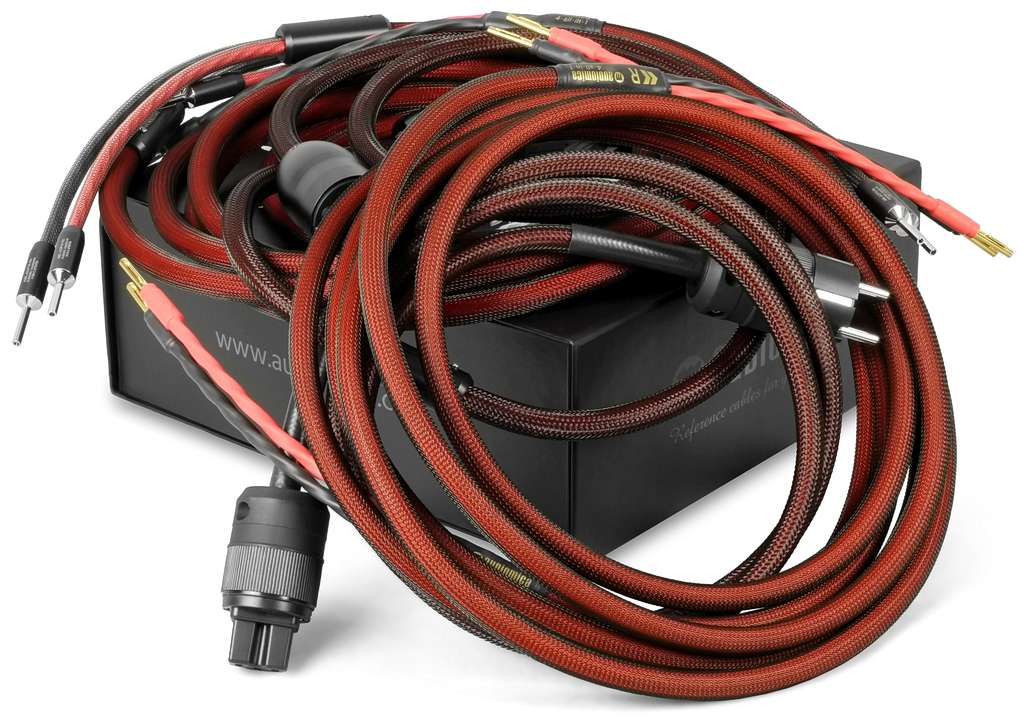
Design and functionality
There is no doubt that music enthusiasts increasingly value simplicity and convenience. Constructing a stereo system from several or even a dozen components, selecting appropriate cabling, power accessories, and anti-vibration platforms has become a pursuit for the most dedicated audiophiles. Meanwhile, the average customer - even one aiming for high-end equipment - wants a system that is aesthetically pleasing, functional, and takes up minimal space. There is nothing wrong with that, and I have no intention of criticizing it. Many all-in-one devices offer such exceptional sound quality that separating the electronics into an amplifier and streamer (or, ideally, a network transport, digital-to-analog converter, preamplifier, and power amplifier) seems like an exercise in excess. High-end all-in-one systems, when paired with high-quality loudspeakers, can form a setup fully deserving of the audiophile label. Integrating key components into a single enclosure helps reduce costs and eliminates the need for interconnects, power cables, and even a power strip. Nevertheless, at the very least, speaker cables and a power cord are still required. A Polish manufacturer has therefore decided to create a dedicated solution.
According to Audiomica Laboratory, the 4-all-in-1 cable set is a comprehensive connectivity solution designed for all-in-one audio systems. It responds to the growing popularity of such devices and the increasing demand from customers who recognize the need to optimize and enhance their listening experience. The cables in this set are constructed from high-quality materials using the brand's proven proprietary processes and technologies. Their conductive core consists of high-purity, tin-plated oxygen-free copper. Carefully refined signal insulation and shielding systems are designed to neutralize interference from the surrounding environment and external sources of noise emitted by peripheral devices. Additionally, manufacturing the entire set from the same copper grade ensures exceptional coherence and eliminates the "weakest link" effect, which, according to the company, often results from using improperly matched or stock cables included with equipment. Most all-in-one systems do not come with speaker cables, and as for the power cord, at best, one can expect a standard "computer" cable whose only advantage is that it works.
The fact that the Gorlice-based manufacturer has carefully analyzed customer preferences and decided to cater to all-in-one system owners is evident not only in the combination of two products into a single, ready-to-use set. After all, this is not a groundbreaking innovation - any cable manufacturer could assemble such sets based on models that have been available for a long time. However, in this case, we are dealing with cables designed from the ground up specifically for all-in-one devices. Another significant convenience is the standardization of cable lengths within the set. According to Audiomica Laboratory, since this is intended to be a simple and quick upgrade for an existing hi-fi system, the 4-all-in-1 set is available in a predefined configuration and length. The package includes a pair of 2.5-meter speaker cables terminated with solid, 24-karat gold-plated banana plugs, as well as a 1.5-meter power cable with an IEC connector on the component side and a region-specific plug on the other. Essentially, this is a complete, ready-to-use solution. Let's be honest - if customers were given the choice, 90% of them would likely opt for 2.5-meter speaker cables and a 1.5-meter power cable. This also simplifies matters for the manufacturer and dealers - there is no need to stock multiple versions differing only in length, leading to cost savings and a lower price for the end user.
Since we have touched on this topic, let's talk about pricing. The 4-all-in-1 set costs €790 (net price). Is that a lot or a little? Considering the build quality of these cables, I would say the price is reasonable. Things get even more interesting when we examine how much it would cost to assemble a similar set using other Audiomica cables. The most affordable power cables currently available are the Magnet Gold and Jasper Reference. The former is priced at €430 (1.5 m), while the latter costs €655 (1.5 m). The power cable included in the 4-all-in-1 set is more akin to the Jasper Reference, meaning we are not far off on the power cable alone. Now, let's look at the speaker cables. The least expensive options from Audiomica include the Kammer Gold at €490, Diamond Transparent at €670, and Dolomit Reference at €795. Have you done the math? Exactly - the 4-all-in-1 set is 40-50% cheaper than buying the cables separately. Fortunately, there is no need to present proof of purchase for an all-in-one system, as even audiophiles looking for high-quality speaker cables for their fully analog amplifier will be interested in this package. In a way, it feels like getting one of the two components as a bonus.
It comes as no surprise that shortly after the launch of the 4-all-in-1, customers began inquiring whether they could get the same product in an even more refined version - featuring upgraded conductors, more aesthetically pleasing connectors, anti-static filters, and several additional enhancements found in individually sold models. This led to the creation of the 4-all-in-1 PRO, which I had the privilege of receiving as one of the first reviewers worldwide. From a technical standpoint, the key differences lie in the connectors and the increased number of conductive strands. While the speaker version of the 4-all-in-1 employs 192 strands, the PRO iteration boasts 256. This has not significantly impacted the overall cable thickness but should contribute to an enhanced listening experience. In the power cable, the conductor itself remains unchanged (256 micro-conductors divided into eight strands), yet the PRO version features different connectors with a metal housing and an anti-static filter encased in a metal sleeve. Overall, the higher-end variant presents itself as exceptionally premium. What was plastic or silicone in the standard version (such as connector housings and splitters in the speaker cable) has been upgraded to metal in the PRO version, exuding a luxurious aesthetic. It is worth emphasizing that in both cases, the build quality is exemplary. I have encountered expensive cables that looked as if they were assembled by someone who had been handling airport luggage just days before. Some even had loose braiding, detached connectors, or heat shrink tubing that had only been treated on one side. In contrast, Audiomica's cables are crafted to perfection. Much like Cardas, AudioQuest, Nordost, and other top-tier brands, it is evident that these cables are the work of a seasoned professional who has honed their craft to mastery. Even if I tried to find faults, I would have no grounds for criticism. Łukasz, Stach - respect!
Both versions of the 4-all-in-1 set also differ in packaging. The standard kit is sold in simple cardboard boxes enclosed in a sleeve adorned with an illustration of a winged ballerina. While visually stunning, the boxes are rather flimsy and struggle to support the weight of the cables inside (which are quite heavy and rigid). A pleasant addition includes black pouches and a handwritten document that doubles as a certificate of authenticity and a warranty card. The PRO version, however, is the epitome of luxury. Both cables come in a thick, rigid, magnetically sealed case, featuring the same artwork but in negative - the packaging is black, and the ballerina is white. The metal components of the cables are protected by silicone mesh sleeves, while the power plug is shielded with a plastic cap. Inside, there are additional thoughtful touches, such as a sticker with a handwritten specification, a warranty card, and the hashtag "#Cables_Make_A_Difference." Normally, I am immune to such trinkets, but I must admit that the 4-all-in-1 PRO set leaves an incredibly strong impression. If some proud new owner of audiophile all-in-one systems decide to equip themselves with this cable set right from the start, it is entirely possible that unboxing the cables will bring them more joy than unpacking the equipment itself. This brings us to the question of how much Audiomica is asking for this marvel. The answer is €1,590/$1,735 (net price). At first glance, it may seem like a substantial amount, but the same story repeats itself - when compared to the cost of purchasing the cables separately, it turns out to be a rather attractive deal.
In regular use, both cable sets perform well, although due to their limited flexibility, I would not recommend them to installers or audiophiles who need to route cables through tight spaces. I initially had some reservations about the terminations, as this type of banana plug is not my favorite, but it turned out that the connectors slide into the sockets effortlessly and hold securely. I assume they were chosen either for sonic reasons or because such massive cables require robust support - BFA bananas can bend or break if they do not fully enter the terminal (which is not always possible).
I also appreciated the fact that, in addition to directional markings, the 4-all-in-1 speaker cables feature "R" and "L" symbols. It may seem like a minor detail, but it is an excellent idea. Channel markings on interconnects are standard, but not so much on speaker cables. Why? Because we supposedly know which speaker we are connecting? That may be true on the speaker end, but at the amplifier side, I deal with a tangle of cables and often have to check whether the one I am holding runs to the right or left speaker. Not everyone has a setup that allows easy access behind the equipment rack to verify connections. I have pointed this out to cable manufacturers countless times, and they always respond with a dismissive "Sure, sure", only to keep doing things their way. The cables I use for equipment testing are labeled with different colors of electrical tape for this very reason. Audiomica, however, has taken this into account - bravo! But why did I find these markings only on the more affordable set? The higher-end model has similar engravings on its metal sleeves, yet no channel designations, with only small directional markings and arrows on the splitters. A missed opportunity.
Drawbacks? I can see three, all of which are philosophical in nature. Firstly, there seems to be no technical basis for certain cables to suit all-in-one systems better than those designed for integrated amplifiers and power amplifiers. From a purely engineering standpoint, an all-in-one system is essentially an amplifier with extensive functionality - more complex than a typical analog integrated amplifier, but not to the extent that it would require specific cabling. Have these particular models been specially adapted for Class D amplifiers, which are more commonly found in stereo all-in-one units than in traditional integrated amps? I haven't been able to confirm this, but I hope to have the opportunity to ask Audiomica's current CEO in the near future.
My second concern is whether owners of such devices will be inclined to invest in a high-quality power cable and whether they will perceive any sonic benefits. Some will undoubtedly remain skeptical, while others may conclude that it's worth a try. One can assume that the 4-all-in-1, and especially the 4-all-in-1 PRO, will appeal primarily to users of mid-to-high-end equipment. In such cases, it would be inappropriate to rely on the stock cable included merely to confirm that the device powers on. I know this may sound illogical, but everyone goes through this realization at some point. If someone has a good ear and any sensitivity to such matters, they eventually come to understand that changing the power cord can make a difference - sometimes subtle, sometimes quite significant - depending on the specific circumstances. This topic has been debated countless times, so I will refrain from delving into it again.
The third drawback is the lack of a more comprehensive cable set in this series. Speaker cables and power cords are essential, but many users will also require various interconnects. How about introducing a bundle that includes a USB, HDMI, or LAN cable, or even a standard RCA interconnect for a turntable or phono stage? For now, users will have to arrange these separately. However, it is entirely possible that having purchased the 4-all-in-1, some customers will turn to Audiomica for their additional cabling needs.
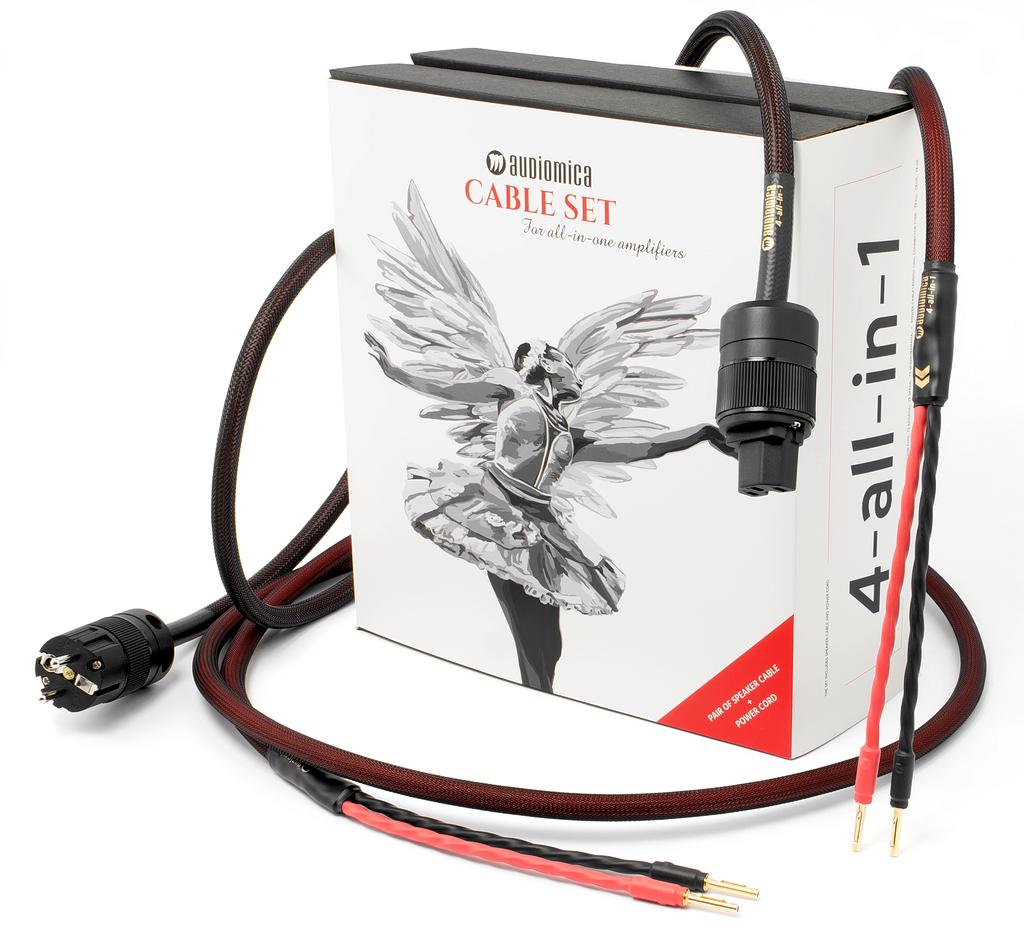
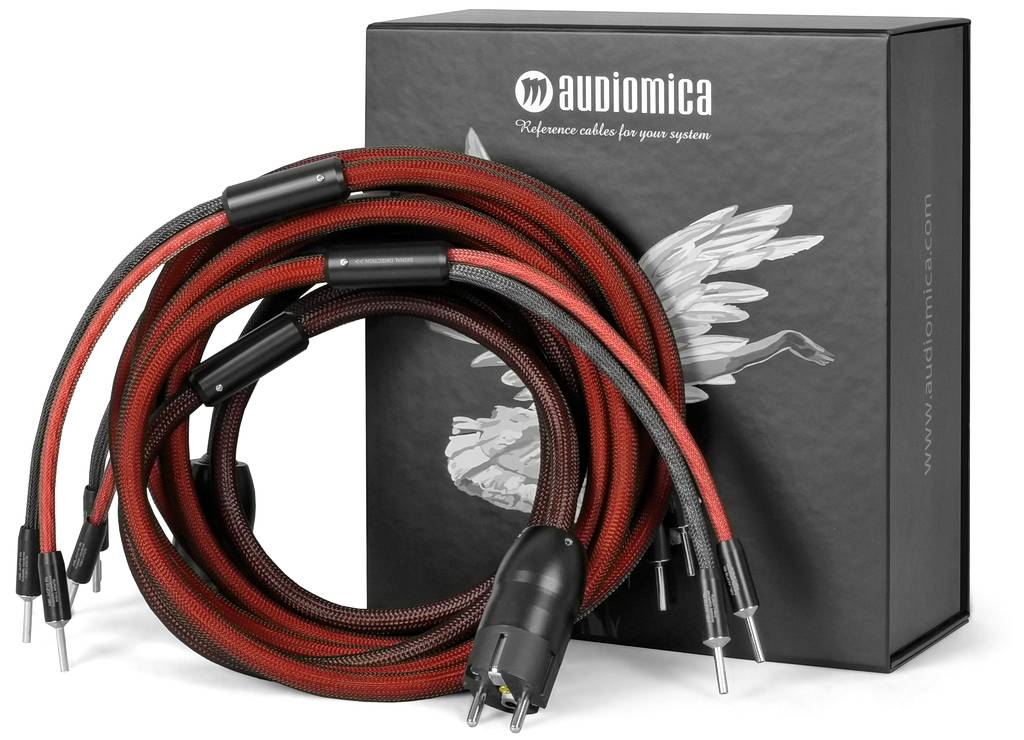
Sound performance
While no two stereo systems in the world are identical - if only due to the conditions in which they operate and their setup - every audiophile inevitably goes through several stages, a series of events and processes that unfold in a fairly predictable manner. In my opinion, entering the world of high-end cabling is one of the most significant milestones. This isn't merely about the cables themselves or the courage it takes to experiment with them, but rather about opening a new chapter, stepping up to a higher level of expertise, and reaffirming one's dedication to the audiophile hobby. Investing in such accessories makes little sense unless one already possesses a sufficiently high-quality hi-fi system. Even the best cables in the world will not turn a pair of vintage Altus speakers and an old-school hi-fi stack from the communist era into Nautilus speakers powered by Mark Levinson monoblocks. In other words, if you are delving into the subject of cabling, it's a sign that you have already achieved quite a lot and are now embarking on the next stage of this captivating journey.
For me, the process followed a textbook trajectory. At first, there were initial experiments and the fascination with the realization that it actually works - the sound, while not dramatically different, changes in a noticeable way. Then came the quest to find cables that best suited my system, a phase filled with both successes and disappointments. It is all too easy to be seduced by cables that prioritize a single characteristic. One might be enamored with their strengths while overlooking their weaknesses. Van den Hul cables offered outstanding bass and a beautiful timbre but were somewhat deceptive, adding unnecessary sweetness. Nordost cables excelled in transparency, dynamics, and soundstaging but sounded too light and dry. AudioQuest cables impressed with their balance and neutrality but ultimately left me feeling underwhelmed, as they lacked any standout qualities. Of course, I am referring here to entry-level models, as the higher-end ones were priced beyond the value of my entire setup. After several more trials, I reached a realization - there are only two paths forward - either stick to a budget and accept that there will always be trade-offs, or venture into the realm of cables that enhance sound across all aspects, eliminating the need to choose what to prioritize and what to sacrifice. I first achieved this when I introduced the Albedo Air I speaker cables and the TARA Labs RSC Reference Gen 2 interconnect into my system. That experience taught me that the best cables are not those that overwhelm you with immediate euphoria, but rather those whose effects are clearly positive yet not exaggerated to the point of making you want to call every friend and tell them they must hear it for themselves.
Why do I mention this? Because this is exactly how Łukasz Mika described his approach to evaluating cables in an interview. According to him, the best way is to borrow new cables, replace the existing ones without expecting spectacular changes, allow them time to break in, let the sound stabilize, and only then switch back to the previous cables. The idea, of course, is that this method reveals the quality of Audiomica cables - returning to other (presumably inferior) wires becomes impossible. The catch is that achieving this is extremely difficult and is a hallmark of true high-end accessories. Such cables must be neutral enough to avoid shocking the listener or creating an impression of gaining something while losing something else. At the same time, they must maintain such a high level of performance that they subtly do their job so well that reverting to the previous configuration becomes a painful experience. Don't ask me why the world is designed this way, but one thing is certain - these cables all share one common trait - they are expensive or very expensive. Seeing a setup consisting of speaker cables and a power cord priced at 812,00 EUR, I initially assumed the power cable would be relatively universal, as it's rare for such cables to drastically alter the sound in a specific direction. However, I expected the speaker cables to follow the usual “something for something” trade-off pattern. That was not the case. In fact, I can confidently say that this test unfolded precisely according to Łukasz Mika's method.
It all started innocently enough. Naturally, I first connected the standard, more affordable set. The sound was balanced, natural, coherent, and fluid, yet still possessing energy and resolution. I was pleased to find no significant shortcomings or anomalies, though I wouldn't go so far as to call it breathtaking. The copper signature of these Polish cables was clearly audible - pleasant tonality, deep, full-bodied bass, and an absence of unnatural brightness. Just as with loudspeakers, where one can instantly recognize whether the diaphragm is made of paper or polypropylene, certain cables quickly reveal their copper nature, and the 4-all-in-1 set undoubtedly falls into this category. After a few or perhaps a dozen hours of burn-in, the system began to spread its wings, surprising me repeatedly with "bonuses" I hadn't anticipated. A sparkle in the upper frequencies here, vocals subtly stepping forward to become more tangible there, and an unexpected emergence of musical micro-details in the background. As soon as the 4-all-in-1 set lulled me into a sense of familiarity, its sound began to accelerate, gaining sharpness, confidence, and well-defined contours. This, too, was a gradual process, allowing me to immerse myself in the music, waiting for the changes to settle. This moment arrived after roughly a week.
Switching back to the cables I use daily would have meant replacing the 4-all-in-1 with the Tellurium Q Ultra Silver II speaker cables (3,837 EUR) and the Enerr Transcenda Ultimate power cord (1,863 EUR). Instead, I decided to go in the opposite direction, assembling an alternative set with the Tellurium Q Ultra Blue II speaker cables (196 EUR) and the Melodika MDP power cord (77 EUR). As you can probably guess, the sound "collapsed." I don't want to resort to the infamous words once printed on a magazine cover after Poland's World Cup match against Ecuador in Germany, but it was hard to believe that just moments ago, the same system had been performing so well, with cables being the only variable (and not even all of them). Since there was little sense in prolonging the experiment, I returned to the Audiomica set, once again allowing my ears to acclimatise before taking a bold leap - switching back to my own cables, which are seven times more expensive than the 4-all-in-1 set. The result? Of course, it was better. But was it so much better that the tested set could be deemed a failure? Honestly, I would say quite the opposite - this comparison only reinforced my appreciation for the Audiomica set. In absolute terms, the Tellurium Q and Enerr cables emerge victorious, but in terms of price-to-performance ratio, the Audiomica set is the undisputed winner of this showdown.
Enriched by these experiences, I eagerly anticipated testing the PRO version. To ensure a fair comparison, I subjected the more expensive set to a week of burn-in within a different system. The starting point was the standard 4-all-in-1. The differences in sound when switching to the 4-all-in-1 PRO were audible, but calling it a revolution would be quite an overstatement. Improvements were noticeable in soundstage, microdynamics, bass response speed, and overall clarity. It felt as though the phantom images were more precisely defined and slightly smaller, allowing for more air between them while simultaneously making the system sound more effortless, expansive, and, dare I say, more concert-like. These changes occurred while maintaining the overall sonic signature I had come to know well from the standard 4-all-in-1. Specifically, I refer to its impeccable tonal balance, naturally warm timbre, coherence, and musicality. Even though it had already been properly burned in, the more expensive Audiomica set repeated the same trick that had earned my appreciation for the standard version - the longer I listened, the more I liked it.
At first, the impression was, "Just a good copper cable. Well-made, pleasant, but nothing extraordinary. There are plenty of similar cables at this price point..." - that might be the thought on the first day, but over time, the sound grows on you, embedding itself deeper into your appreciation. While listening to the 4-all-in-1 PRO set, one comparison came to mind - Acoustic Zen. For those familiar with the magic in those cables, I've already said everything that needs to be said.
To wrap up, an interesting observation - perhaps even the cherry on top for some. On the final day of testing, I set aside the speaker cables, keeping only the power cords and using them to audition power accessories from Essential Audio Tools in conjunction with the Enerr Tablette 6S power strip. Surprisingly, even without their "factory" companions, the Audiomica power cables exerted a similar influence on the sound as the speaker cables. I would say they leaned even more toward dynamics and transparency, yet the overall presentation remained highly consistent. The Polish manufacturer has managed to achieve full coherence - not just within a single set packaged in the same box but even when mixing power cables from both the more affordable and premium series. One ran from the wall socket to the Enerr power strip, while the other connected the strip to the amplifier. Interestingly, it seemed as though both cables complemented each other's effects. Perhaps this is the advantage of synergy rather than pulling the sonic blanket in opposite directions?
In any case, the result was superior to using just one Audiomica cable alongside an EAT power cord. I then returned to the 4-all-in-1 sets and conducted a reverse experiment. First, I used each set as a whole, then replaced the power cable with a different one - Melodika, EAT, and then Enerr's Transcenda series (without the "Ultimate" designation). Only with the Enerr cable did the sound maintain its appeal. In the other two cases, something felt slightly off. Subtle, yet perceptible - the smoothness and balance were not quite the same. Does this confirm the theory that wiring an entire system with cables from a single manufacturer yields better results than mixing different brands?
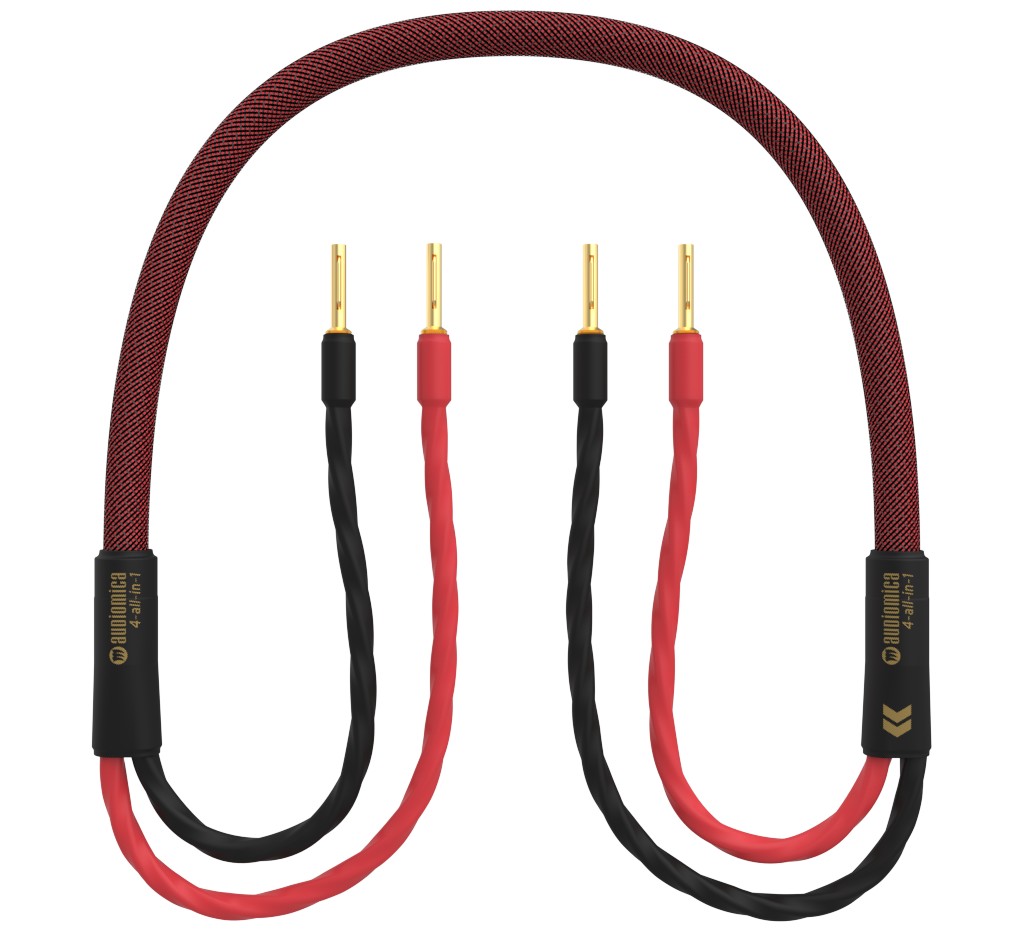
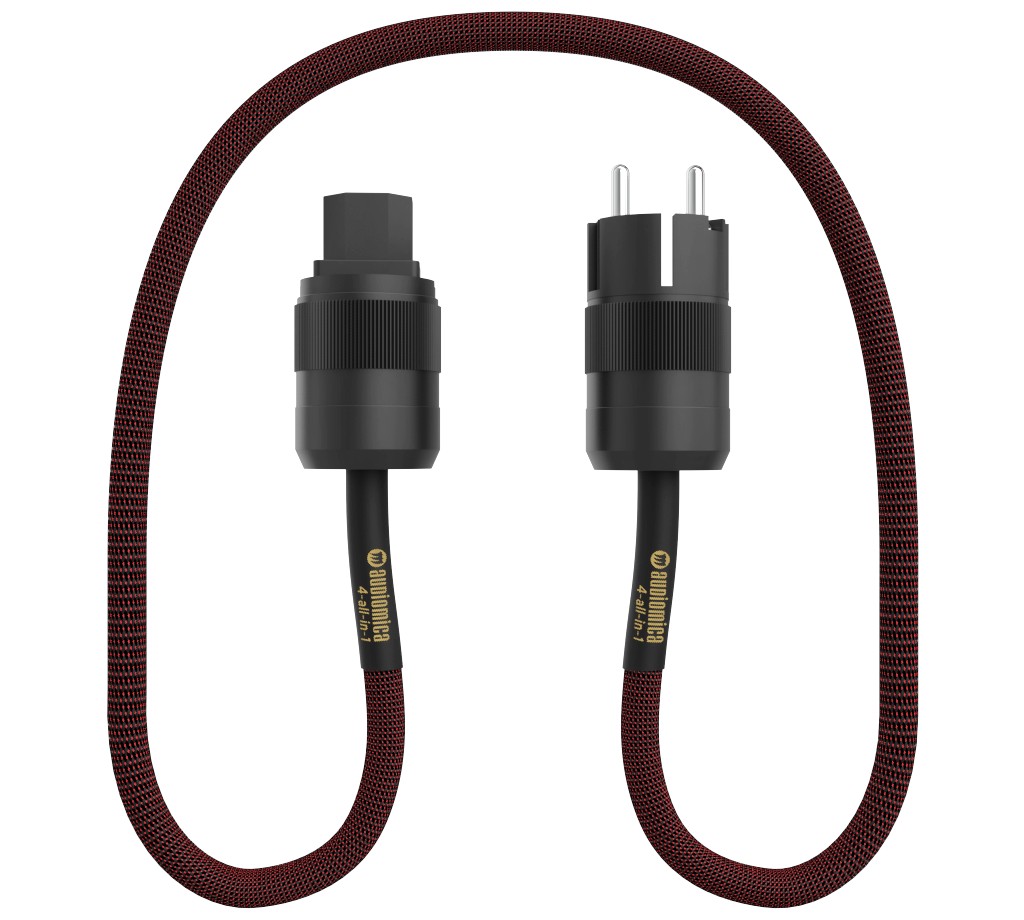
Build quality and technical parameters
The Audiomica 4-all-in-1 is a cable set comprising a pair of speaker cables and a power cable. In both cases, the conductive core is made of high-purity, oxygen-free, tin-plated copper. Utilizing the same copper fraction throughout the set is intended to ensure optimal consistency and eliminate the "weakest link" effect. The refined audio signal insulation and shielding system effectively counteract environmental interference and external disturbances emitted by peripheral devices and surrounding electronics. More precisely, the shielding layer consists of an aluminum foil and a braid of tin-plated copper - likely very similar, if not identical, to the conductor bundles.
The speaker cable contains 192 conductors arranged in six bundles, each with a cross-section of 1.45 mm² (each bundle comprising 32 strands). The power cable follows a similar approach, featuring eight bundles of 32 strands. This uniform braiding structure simplifies the production process. In the 4-all-in-1 set, the speaker cables are terminated with 24-karat gold-plated banana plugs.
At first glance, the PRO version differs from the standard model primarily in the number of conductors used in the speaker cable - 256 instead of 192. Yet, the distinctions extend beyond this. According to Audiomica Laboratory, the braiding structure and conductor connection method in the PRO version's speaker cable positively affect inductance, ensuring unrestricted current flow and, consequently, an unimpeded audio signal. The manufacturer asserts that the connection method prevents the formation of individual magnetic induction fields that could sum up and amplify each other, potentially causing signal flow disruptions.
The 4-all-in-1 PRO set includes a pair of 2.5-meter speaker cables terminated with proprietary AML-ACP10 Rh connectors, crafted from brass and coated with a double layer of rhodium to ensure optimal signal transmission. The connector housing is made from a non-magnetic, anti-static material. The 1.5-meter power cable is equipped with AML-RC10 Rh connectors compatible with EU/US/IEC standards. The conductive material in these connectors is red copper coated with a non-magnetic rhodium layer. The high-quality aluminum housing incorporates a resonance prevention system and provides superior shielding against electromagnetic interference from external sources. The connector coating is applied using the DCP process. Additionally, the PRO version cables feature an antistatic POM-C sleeve, offering outstanding protection against electrostatic charges.
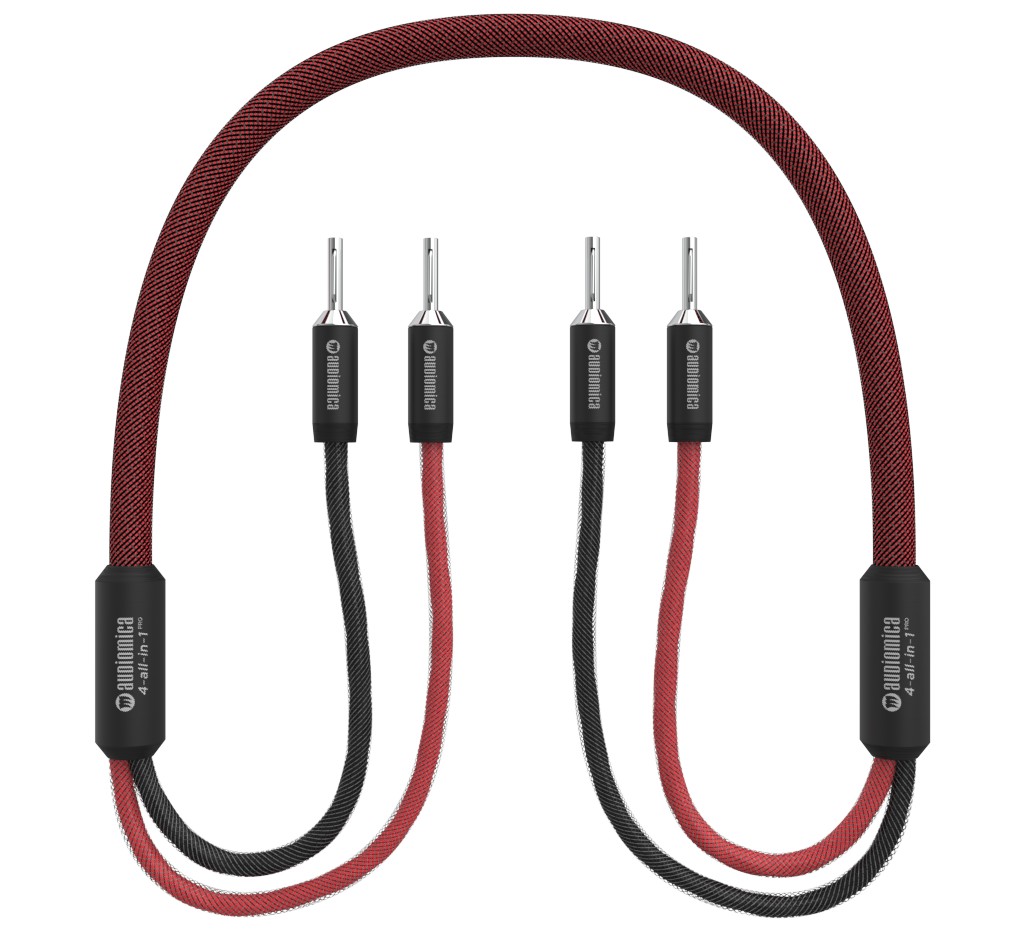
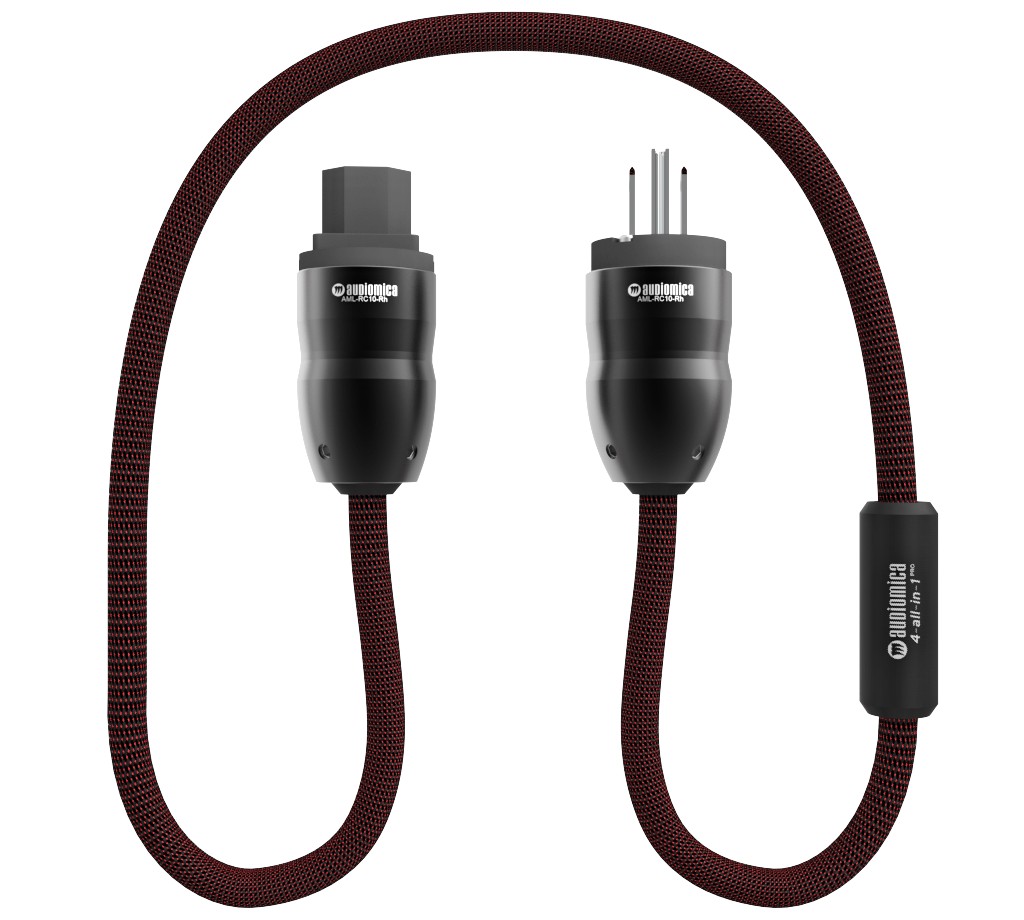
System configuration
Audiovector QR5, Equilibrium Nano, Unison Research Triode 25, Hegel H20, Auralic Aries G1, Auralic Vega G1, Marantz HD-DAC1, Clearaudio Concept, Cambridge Audio CP2, Cardas Clear Reflection, Tellurium Q Ultra Blue II, Albedo Geo, KBL Sound Red Corona, Enerr One 6S DCB, Enerr Tablette 6S, Enerr Transcenda Ultimate, Fidata HFU2, Melodika Purple Rain, Sennheiser HD 600, Beyerdynamic DT 990 PRO, Beyerdynamic DT 770 PRO, Meze 99 Classics, Bowers & Wilkins PX5, Pro-Ject Wallmount It 1, Custom Design RS 202, Silent Angel N8, Vicoustic VicWallpaper VMT, Vicoustic ViCloud VMT.
Verdict
Throughout my career, I have tested numerous cables, but this might be the first time I am reviewing ones specifically designed for the increasingly popular all-in-one systems. Initially, I suspected this was merely a clever marketing strategy to boost sales, and that after inspecting and listening to them, I would conclude that Audiomica's only real innovation was the (admittedly very elegant) bundled packaging. But that was not the case.
First, I do not believe these cable sets are solely suited for all-in-one systems. They perform equally well with any integrated amplifier or power amplifier, so do not dismiss them if you have a more complex setup. Second, these are genuinely well-crafted cables, and when compared to competing products - including those from Audiomica's own lineup - the pricing is particularly attractive, especially for the more affordable set.
The question remains - from a sonic perspective, does it make sense to wire an entire system with cables from a single manufacturer? In most cases, yes, but caution is advised to avoid overdoing it. To illustrate, I personally love Cardas and Nordost cables, yet if I were to use only one of these brands - from the wall socket to the speakers - after a week I would start dozing off during listening sessions.
With Audiomica, there is no such risk, as these cables deliver a natural, balanced sound - cohesive and linear, with a touch of copper warmth, yet sufficiently fast, dynamic, and transparent to ensure that no details are lost. Since there are no drawbacks, purchasing a complete set truly makes sense. Or, to put it another way, Audiomica markets these cables as "designed for all-in-one systems", and while they will indeed work exceptionally well with the vast majority of such devices, I would not mind if the packaging simply read, "Buy a great speaker cable and get a power cable as a bonus" - because that would be equally true. Highly recommended!
Technical data
Audiomica Laboratory 4-all-in-1
Conductor: Tinned oxygen-free copper (OFC)
Shielding: Aluminum foil, tinned copper braid
Cable cross-section: 6 x 1.45 mm² (speaker), 8 x 1.45 mm² (power)
Number of conductors: 192 (speaker), 256 (power)
Cable diameter: 12 mm (speaker), 12.5 mm (power)
Length: 2 x 2.5 m (speaker), 1.5 m (power)
Plugs: Banana (speaker), AC/IEC (power)
Price: €790 (net price)
Audiomica Laboratory 4-all-in-1 PRO
Conductor: Tinned oxygen-free copper (OFC)
Shielding: Aluminum foil, tinned copper braid
Cable cross-section: 8 x 1.45 mm² (speaker), 8 x 1.45 mm² (power)
Number of conductors: 256 (speaker), 256 (power)
Cable diameter: 12.5 mm (speaker), 12.5 mm (power)
Length: 2 x 2.5 m (speaker), 1.5 m (power)
Plugs: Banana AML-ACP10 Rh (speaker), AC/IEC AML-RC10-Rh (power)
Price: €1,590 (net price)
Manufacturer: Audiomica Laboratory
Sound performance
Editor's rating
8.4Overall9Sound7Functionality9Design9Quality8Price



